Hidden & Dangerous 2
War is hell - but what about the game?
Despite being one of the buggiest games in history, the original Hidden & Dangerous had so much going for it that, somehow, Illusion Softworks got away with it.
In broad terms, the sequel retreads the original ambition to capture tension and fear of World War II and the deep tactics required to deal with a determined enemy. Once again you're in control of a four man SAS squad, sent all over the world to gather crucial intelligence, disrupt communications and generally choke the enemy war effort using a gratifying mixture of stealth and ugly brute force to do your bidding. And it's not just the Nazis you're fighting this time, either, with a four-year, 20-mission campaign taking in extremely diverse terrain and climate.
Bullet in the head
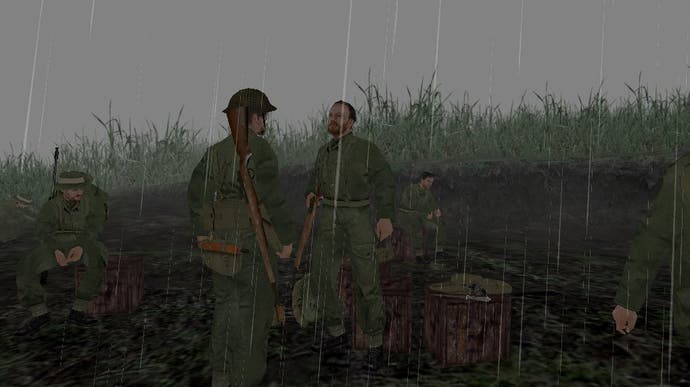
Kicking off in the icy Arctic conditions of Norway in early 1941, the game delights in throwing up one extreme after the other, taking in the arid desert waste of North Africa, the humid dense jungle of Burma, the Alpine lushness of Austria, before moving onto with the rubble strewn villages of Northern France and concluding in Czechoslovakia. At times the sights are so spectacularly beautiful, you often forget you're in the middle of a bitter war, strolling around like a gormless tourist admiring the architecture and the sunset before - thwock - another bullet lodges itself in your cranium.
But before you can join the war effort you have a number of modes available; the standard four-man Campaign mode, a Lone Wolf version which forces you to go it alone, and a more challenging Carnage mode that tasks you with killing everyone on every mission, while the Single Mission and accompanying Carnage alternative simply allow any of the completed missions to be played all over again, maybe to try out different tactics.
Once you've chosen your preferred gaming style, it's then a case of which solider or soldiers you fancy to do the job. A pool of 40 is available to you, and it's up to you to decide which of their skills attributes are most appealing. Each soldier is entirely different to the next, being a vast variety of ranks and abilities, so it's wise to pay close attention. On the attribute side, Health, Strength and Endurance give you a fair idea of the amount of punishment they can take, how much kit they can haul around and how fast and how far they can move before they get knackered - which also has a bearing on shot accuracy.
Stealthy, healthy and wise
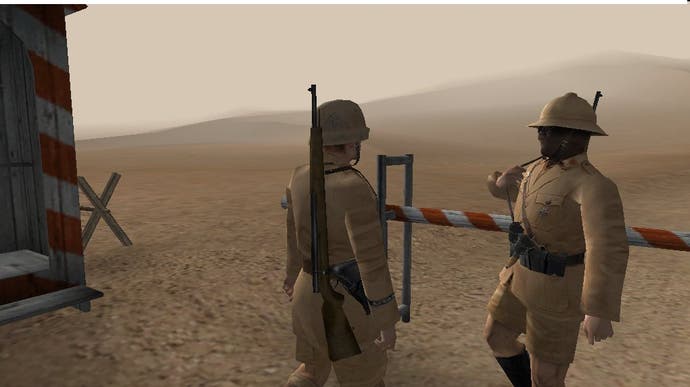
Four skill sets are also listed, detailing their abilities in Shooting, Stealth, First Aid and Lock Picking, and the first comes in particularly useful in a game that has you doing rather a lot of killing. Stealth is less important, but any attempt to sneak up on enemies to kill silently certainly depends on this, while the latter two are of lesser importance, although being able to quickly get into a locked door, or perform a more efficient heal are certainly useful attributes to have.
Fortunately, if you can't be arsed with poring over the stats, the game provides the ability to automatically select your squad and subsequently kit them out. Experienced players might prefer to take certain weapons and items with them, but Illusion knows this won't be for everyone and has wisely automated a lot of the potentially more tedious elements of putting a squad together. All told, it does a decent job of providing the tools for the job anyway, so you'll never be ill-equipped.
The mission briefings are largely in keeping with the rather stylish original, complete with a sweeping war map, arrows, highlighted buildings, BBC-English voiceovers confirming what you're supposed to do, and complemented with some reasonably adept FMV to set the scene. In terms of presenting your mission objectives, it's hard to think of a game that does it better, managing to simultaneously remain authentic (with sketchy aerial maps and paraphernalia), informative without being patronising, and ultimately giving you a sense of purpose rather than making you feel like it's another videogame level where you have to shoot stuff.
Panic on the streets of Normandy

From there it's pretty much a blank canvass for you to tackle the objectives how you see fit, and it's this relative sense of freedom that's simultaneously the genius of Hidden & Dangerous II and the most intimidating aspect. Time after time there's this almost palpable sense of panic. You know the enemy's out there, but you're never quite sure where (until you've played through the same mission a few times of course). Often they're just going about their business, patrolling a perimeter fence or just standing guard, manning a sentry post. And when there are so many variables to deal with it's not a game you can just mechanically pick your way through, seeing the enemies spawn in precisely the same place every time you play.
In H&D 2 there's a sense that you've got to have your wits about you 100 per cent of the time. You can't just assume you've cleared a section and can safely charge about making loads of noise. Time after time you'll find a straggler lurking, ready to fire hot lead into you before you've even had time to blink. Maybe he was disturbed by all the racket you were making during your approach and decided to stealthily investigate. Although it's fair to say the AI suffers from plenty of quirks and inconsistencies, this is a world away from the run and gun cannon fodder grunts that storm into the fray like so many shooters. To kill in H&D 2 is never less than an achievement in itself, because you'll rarely be allowed the time to get close enough to them to make it conclusive. It's a game of duck and dive against overwhelming odds, never allowing you to get too cocky, and always reminding you how fragile life really is.
On your side is some useful and sharp buddy AI. Your men always alert you to any incoming danger, which appears as a red blob on the appropriate point on your compass, allowing you to focus your attentions on that precise spot. Better still, they're pretty good at taking the aggressors down too, meaning you don't have to do it all on your own. The game also features an ingenious direction indicator on the compass for incoming enemies via a small cone of sound, red for bullets, grey for footsteps. So even when you can't actually see your foe, you can get a good idea of where they are camped out, allowing you to maybe seek cover, lob a grenade or take an alternative route. In practice it's incredibly useful, providing the kind of instant feedback that most games have never bothered to provide, and forces you to think about your situation on a completely different level.
Your flexible friend
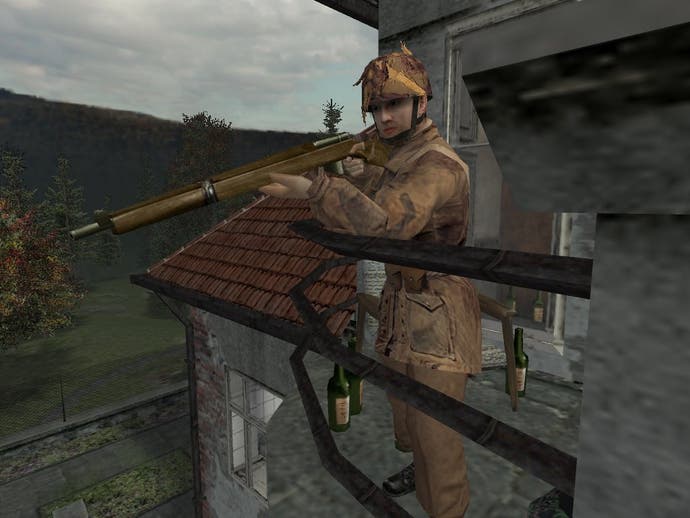
How you decide to actually control, order and manipulate your squad is entirely down to you, in one of the most flexible pieces of game design we've come across. On a basic level, H&D 2 works as a third-person action/strategy shooter, an FPS, a real-time strategy game, and even a turn-based strategy game where you can pause and plot your moves ahead, or a mixture of all four if you fancy. We admittedly preferred to play it straight through in a mixture of third and first-person with a minimum of strategic planning (as that's how we wanted to play it), but for those with a penchant for the strategic side of things, the ability to pan out to an isometric viewpoint, plot waypoints, queue up commands and watch the action unfold with literal military precision is immensely satisfying.
I've sat for ages watching other people play the game this way, and it's an impressive sight to see a game you've previously experienced as an action game turned on its head and played another. Personally, the interface could have been made a little more intuitive, and I was scared off more than anything (and happy to play the game my way). While it's a massive improvement on the utterly confusing and broken original (keeping the action on the screen at all times for one thing), it arguably needs to be as simple to control as an RTS before people will consider removing their third-person action head. Sometimes you can have too much control, and H&D 2 presents such a bewildering array of commands it might intimidate those with more action leanings.
To illustrate the point, the command trees (accessible via the num pad) allow you to order movement, attack, action, silent movement, silent attack, silent action, formation, tactical mode, and call support. Most of these categories also house a further half a dozen sub commands, creating rather a comprehensive set of potential permutations that allow you to direct the action exactly how you want to. As complicated as this initially seems, it's a fairly simple system that becomes second nature once you learn the basics. In the main you can carry out most, if not all these actions within the main action-based strand of the game, albeit individually, but it comes in most useful within the strategic view when you're requiring a very specific command.
Quick save to victory
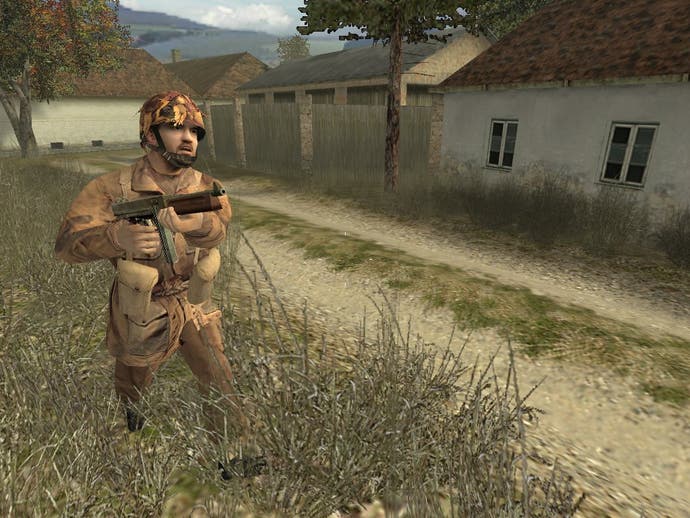
In our experience, the game doesn't suffer a jot by merely ordering your squad to follow you around and fire at will. The more gung-ho approach might result in you taking more enemy hits, but it certainly allows you to make quicker progress, largely thanks to the fact that they follow your actions. For example, if you crouch, they crouch; if you run, they follow - there's no need to tediously alter the commands each and every time. For those who don't fancy plotting the game like a game of chess, there's also a limited save function which effectively allows you to 'cheat' to a certain extent, but the fact there's only one slot can often mean you're forced to restart when it all goes utterly pear-shaped (which is quite often, if truth be known).
In the four years since the original emerged, other titles have come along to build on the legacy, adding vehicles and greater variety, and H&D 2 obliges with a few extras, such as covert underwater missions, aerial dog fighting, an escape-in-the-jeep level, as well as the ability to jump in enemy vehicles, and it all contributes to keeping things varied. Some levels insist you don't raise the alarm; others have you stealing surrendered enemy uniforms off their back and working undercover (trying to stay out of their line of sight lest your disguise is rumbled). Others are all out guns-blazing warfare, and sometimes all of this is mixed up in the same level. Madness. You're never quite sure what's coming next, and this certainly helped by the regular changes of scene and enemy type as the campaign unfolds.
Take in the view

As a spectacle, H&D 2 is regularly breathtaking. The initial campaigns in Norway and North Africa - great as they are - can't prepare you for the immense impressiveness of Burma, Austria and Normandy. The jungle scenes and the bunkers in Burma are among the best designed videogame environments we've ever clapped eyes on, with a degree of texturing, lifelike foliage and artistry that really bring the game to life and make me want to play them all over again just writing about them. Later, in the castle in Austria and the lighthouse level of Normandy, you'll be spellbound just taking it all in. It took four years to make, and with impressive architecture such as this you can see why. As an engine the LS3D tech still lacks in some areas, however, having a rudimentary level of destructibility and fairly basic physics. The character modelling is pretty decent though, with each and every soldier sporting unique features and that creates a personality so lacking in many, if not most other games. At times H&D 2's atmosphere is so engrossing and immersive you're utterly captivated. For me, this is what role playing should be about, not spells and dungeons.
This rich environment is marvellously complemented by some of the most well considered audio ever used in a game. The music was always one of the highlights of the original, with its sinister theme tune, and the sequel follows in this stark tradition, with a score that sweeps over the action dynamically in as good an advert for the capabilities of Direct Music as we've come across. The ebb and flow of the action is always matched by the orchestra that plays along diligently behind you. For most of the game you'll probably not even acknowledge the subliminal changes of tone and tempo, but take a step back, listen, and you can't help but marvel at how it's all so intelligently constructed. On a similar level, the rattle of gunfire, the panicked shouts of enemy soldiers and the shriek of death would make it harrowing if it were any more real. Is there a helpline for shell-shocked gamers on the box? There should be.
Of course, there are problems, just as there were issues with the original. Although we never came across any really show-stopping bugs, the were incidents that brought us tumbling back to reality, and it's mainly to do with AI and path finding once again - those old bugs bears. The improvements on H&D are legion, but in 2003 we really weren't expecting to have to deal with 'the corridor incident' all over again. Yep, walking into a dead end or a small room and attempting to exit is hampered by a gaggle of squaddies running into you, or walls, as they make a ludicrous attempt to get out of your way. If the room's big enough or the corridor's wide enough it's never an issue, but some levels have simply not been designed to cope with the AI system, simple as that.
Illusion loves bugs
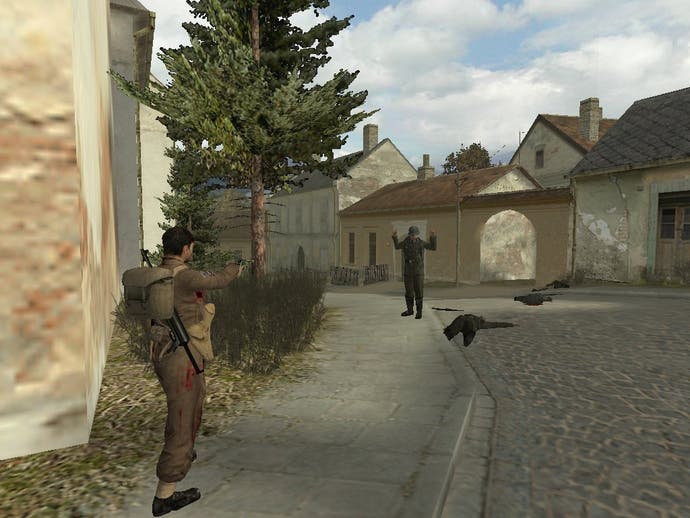
As good as the AI is, most of the time, some really quite bizarre incidents occurred that should have been spotted and ironed out long before its release. For example, on a few, admittedly rare occasions, my previously alert squad just stood blankly while an enemy walked down a corridor - in full view - and killed two of them. Reload. On one memorable night time mission, a series of tanks arrived in among a convoy and rather than engaging us and shelling our fortress, just meekly came to an arbitrary resting point until I eventually found some M1 rocket launchers with which to take them out.
On another occasion, an alarm was sounded literally the very second I performed a silent kill, despite no one being around who could have possibly heard the swift and deadly strike. On the flip side, sometimes the alertness of guards is utterly questionable; on regular occasions, the whole scene is a charnel house, and yet there's Hanz still vigilantly patrolling his little corridor, just yards away from the scene of twenty minutes of carnage and gunfire. Late on in the game we even encountered an ugly case of entire walls disappearing (although it was admittedly only in one small part of one map in the entire game). And so on. They're not massive issues that ruin the game, but these untidy inconsistent loose ends conspire to chip away at your respect for the game, whatever the justification. Sometimes it's hard to believe no one spotted such gaffs, especially as they're largely repeatable bugs.
Endurance test
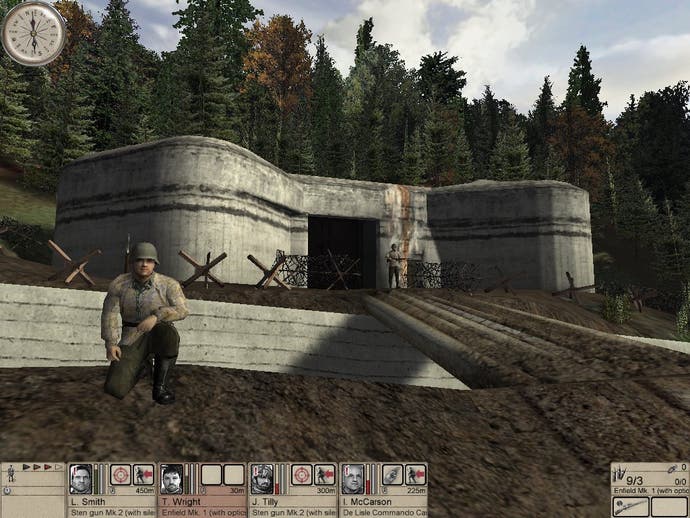
Multiplayer was more or less impossible to appreciate for this review, and we may come back to this in a separate addition or article. We've played some basic LAN Deathmatch and Domination in the run up to its release, but the servers had three people in the world playing on them at the time of review (not surprisingly as the game isn't out yet). But the Gamespy software has been integrated into the front end (as with Halo recently) and it's a breeze to join or set up your own game for up to 32 players across any of the 20 maps. A point worth noting is the game forces you to play in first-person mode, unless you specify 'allow third person' when you create a game.
It's not a point we've mentioned in the review so far, but the addition of an Endurance bar could have interesting implications for multiplayer. Essentially it's your ability to sprint or jump, so if your player runs out of puff not only will you run slower, but you can't jump over or onto obstacles either, lending a degree of strategy to your player choices and movements.
The multiplayer set up gives you the option of various predetermined weapon types, such as Sniper, Assault, Heavy Assault, but you can only carry one main gun (and a pistol in your pouch). You can, of course, pick up enemy weapons and carry one on your shoulder after that, but the limited weaponry should make for an interesting set of battles, and with some superbly designed maps we can foresee this being a very popular element of the game. At present there's no co-operative mode, but we're assured this is coming as part of the already confirmed mission pack.
Still Dangerous
All-round, despite some mildly annoying oversights and irritations (which we dare say will be patched within weeks), H&D 2 is a true sequel, a worthy advancement of the covert sneak fest and never less than captivating. It takes all that was good about the original, improves every element, successfully adds new features and delivers a well-rounded game that will demand more from you than perhaps any other title you'll play this year. If you're looking for the definitive World War II experience, then you won't come away disappointed - it's often unbearably hard and will have you cursing long and hard into the night, but then they did say that war is hell.

